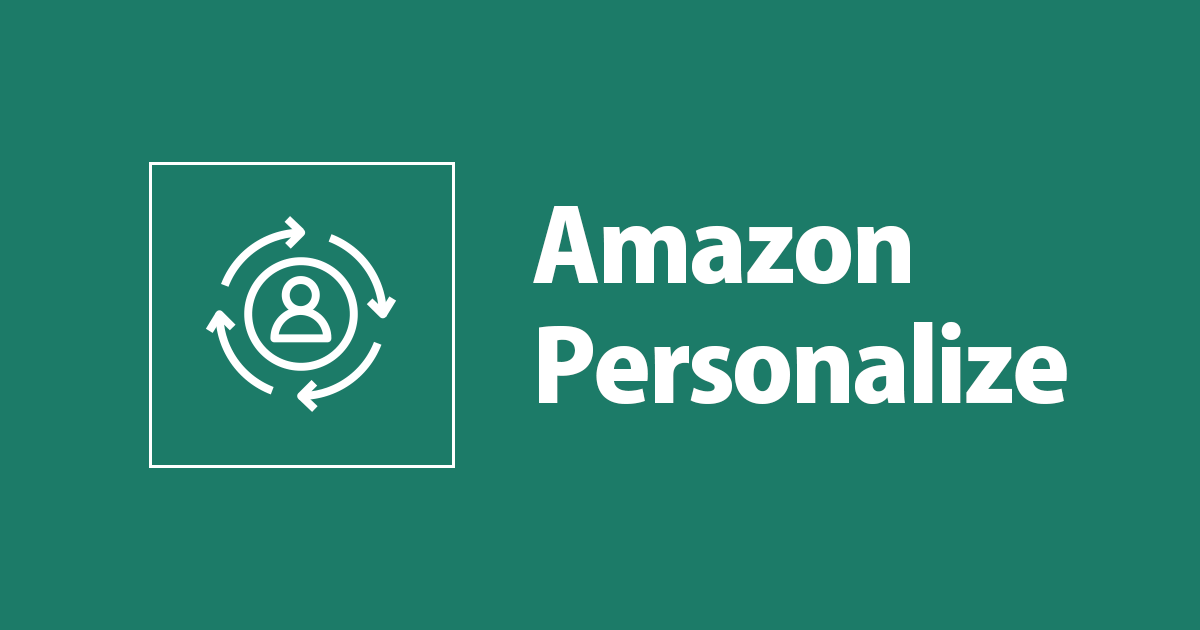A Beginner's Guide to Implementing AWS Personalize: Personalize Your User Experience Effortlessly
 Sumit Mondal
Sumit Mondal
In today's digital age, providing personalized experiences to users has become paramount for businesses looking to stay ahead in the game. Thankfully, with the advent of cloud computing services like AWS (Amazon Web Services), implementing personalization has become more accessible than ever. One such service provided by AWS is AWS Personalize, a powerful tool that enables businesses to create individualized recommendations for their users based on their preferences and behavior. In this beginner-friendly guide, we'll walk you through the steps to implement AWS Personalize in AWS, with easy-to-follow examples.
What is AWS Personalize?
AWS Personalize is a machine learning service that facilitates the development of individualized recommendations for users. It employs advanced algorithms to analyze user data, such as browsing history, purchase behavior, and demographics, to generate accurate recommendations. Whether you're an e-commerce platform, a media streaming service, or a content provider, AWS Personalize can help enhance user engagement and satisfaction by delivering personalized experiences.
Getting Started with AWS Personalize
Step 1: Set Up Your AWS Account
If you haven't already, sign up for an AWS account. Once logged in, navigate to the AWS Management Console.
Step 2: Access AWS Personalize
In the AWS Management Console, search for "Personalize" in the services search bar, and select it.
Step 3: Create a Dataset Group
Before you can start building personalized recommendations, you need to organize your data into a dataset group. A dataset group is a container for your datasets and related configurations. Click on "Create dataset group" and follow the prompts to create a new dataset group.
Step 4: Prepare Your Data
AWS Personalize requires three types of data: Interactions, Items, and Users. Interactions data captures user interactions with items (e.g., clicks, purchases), Items data describes the items themselves, and Users data provides information about your users.
Prepare your data in CSV format and upload it to Amazon S3 buckets.
Step 5: Create Datasets and Schemas
In the AWS Personalize console, create datasets for your interactions, items, and users. Define schemas for each dataset, specifying the attributes and data types.
Step 6: Import Your Data
Once your datasets and schemas are defined, import your data from Amazon S3 into AWS Personalize. Follow the on-screen instructions to map your CSV columns to the corresponding schema fields.
Step 7: Create a Solution
A solution in AWS Personalize represents a trained machine learning model. Create a solution by selecting a recipe (algorithm) and specifying the dataset group containing your data.
Step 8: Train Your Model
Initiate model training by creating a solution version. AWS Personalize will automatically train your model using the provided data and the selected recipe.
Step 9: Evaluate Your Model
After training is complete, evaluate the performance of your model using metrics such as precision, recall, and coverage. This step helps ensure that your recommendations are accurate and relevant.
Step 10: Deploy Your Solution
Once you're satisfied with the model performance, deploy your solution to make personalized recommendations available for integration into your application or website.
Example: Implementing AWS Personalize for an E-commerce Website
Let's consider an example of how a fictional e-commerce website, "TechTrend," can leverage AWS Personalize to enhance user experience.
TechTrend collects data on user interactions with products, such as views, purchases, and ratings. Using AWS Personalize, TechTrend can analyze this data to provide personalized product recommendations to its users based on their browsing and purchasing history.
By following the steps outlined above, TechTrend sets up AWS Personalize, prepares and imports its data, trains a recommendation model, and deploys it to its website. As a result, users visiting TechTrend are presented with tailored product recommendations, leading to increased engagement, higher conversion rates, and ultimately, greater customer satisfaction.
Conclusion
Implementing AWS Personalize may seem daunting at first, but with the right guidance and understanding, it can be a straightforward process. By following the steps outlined in this guide and leveraging the power of AWS Personalize, businesses can unlock the potential of personalized recommendations, driving user engagement and loyalty. So why wait? Start personalizing your user experiences today with AWS Personalize!
Subscribe to my newsletter
Read articles from Sumit Mondal directly inside your inbox. Subscribe to the newsletter, and don't miss out.
Written by

Sumit Mondal
Sumit Mondal
Hello Hashnode Community! I'm Sumit Mondal, your friendly neighborhood DevOps Engineer on a mission to elevate the world of software development and operations! Join me on Hashnode, and let's code, deploy, and innovate our way to success! Together, we'll shape the future of DevOps one commit at a time. #DevOps #Automation #ContinuousDelivery #HashnodeHero